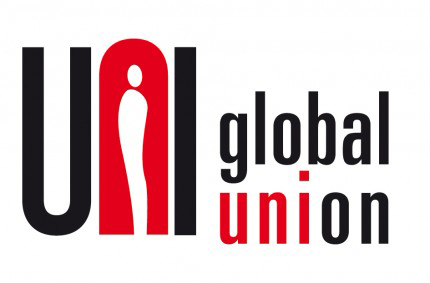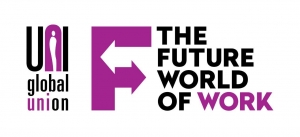Private Equity in Brief – 10 April 2007

Private Equity in Brief – 10 April 2007
Private equity funds hold investments in companies that are not listed on a public stock market. PE funds attract investors like pension funds, but also borrow high-risk money (junk-rated loans) to buy out companies, loading them with debt. They usually control management and, on acquiring a company, often bring in a new team of managers. During the few years they keep a company, PE funds seek to maximise profits and to pump up the company’s value for resale, merger or liquidation – often with scant regard for labour rights, jobs and conditions. Even a strong CSR culture is unlikely to survive.
Middle East & African Investment Company (MEAIC), a Dubai-based private equity firm, was in March awarded a licence to build and operate telecom services in Uganda, following further liberalisation of the African country's telecoms sector. MEAIC acquired the licence through its local subsidiary, HiTs Telecom Uganda, and will make an initial investment of $150 million. MEAIC holds 86% of HiTs Telecom, and its local partner holds the rest. HiTs will be the country’s fourth national phone operator, in competition with Uganda Telecom Limited, MTN and Celtel, who all strongly opposed the liberalisation. MEAIC is funded by 16 individuals and institutions, predominantly from within the Gulf region. Involved in ventures throughout the Gulf and Middle East region, the firm recently decided to focus on investment in Africa, especially in telephony, energy, mining and real estate. In telephony, MEAIC is aiming at 10 million subscribers across 6-7 networks over the next 18-24 months, including in Nigeria, Niger, Burundi, the Democratic Republic of Congo and Ethiopia. It expects to achieve this “through acquiring new licences as well as by taking over existing operations”. Meanwhile, Uganda has reportedly awarded a fifth licence to Warid Telecom, which is backed by the Abu Dhabi Group, the investment company controlled by the United Arab Emirates’ royal family. businessportal24.com, 22 March ’07; Khaleej Times Online (UAE), 2 April ’07; ITP.net, 3 April ’07.
Signs of a private equity bubble? Writing for “Money and Markets”, analyst Mike Larson notes that right now, “Everyone is hungry for a piece of the action. Hedge funds, pension funds, and private endowments are all throwing money at buyout fund managers. Big players like Blackstone Group LP and Kohlberg Kravis Roberts & Co. are raising $20 billion at a time for new buyout funds. And Wall Street firms like Goldman Sachs are opening up their own in-house funds to grab a share of the booty.” But Larson thinks “we're rapidly crossing the threshold from bull market to mania”. Three signs: “First, market watchers are starting to talk about the possibility of $100-billion buyouts.” Megalomania, in other words. “Second, major greed is creeping into the process, and along with it, huge amounts of risk. LBO* (leveraged buy-out) firms paid a record high $12.2 billion in fees to Wall Street investment banks last year. That's massive! But the banks want even more. … Third, the very reason for making these deals has gotten corrupted.” Larson considers this the biggest problem, writing: “Historically, LBOs were used to take struggling companies private. The idea: Get them out of the public spotlight, fire incompetent managers, slash costs, and then return the new and improved firms to the public market. But these days, private equity buyers are throwing money at companies of all shapes and sizes simply because they have too much money to invest.” Larson quotes General Electric Chief Executive Officer Jeffrey Immelt, who looks at about 30 deals a year. His verdict: “The vast majority only add value through financial rather than operational improvements.” *LBO: Investor borrows money to purchase a company, using the assets of the targeted firm as collateral. Mike Larson: “The Private Equity Bubble – When smart money does dumb things”, (Money and Markets), in The Market Oracle, UK, 6 April ’07.
http://www.marketoracle.co.uk/Article708.html
U.S. private equity firms raised $44.3 billion among 68 funds in the first quarter of 2007, according to Dow Jones Private Equity Analyst. The amount raised is up 67% from the $26.6 billion raised by 46 funds in the first quarter of 2006. The buyout segment continues to be the primary focus, representing $35.2 billion of the total raised in the first quarter. For details, see PRIME NEWSWIRE, 9 April ’07.
http://www.primenewswire.com/newsroom/news.html?d=116961
In acquisitions, private equity funds may be crowding out strategic investors, warns Taneesha Kulshrestha in The Financial Express (India) newspaper. Kulshrestha notes that Indian companies targeting global and local takeovers have increasingly joined up with private equity firms like KKR, Carlyle, Goldman Sachs and Citigroup. But in future, companies like Tata Steel, Welspun and Infomedia, which have partnered PE firms for financial support and expertise, may find these same firms turning into formidable competitors in making acquisitions. Flush with money and many in number, PE funds are chasing international deals, pushing up their size and valuations, and putting them beyond the reach of strategic investors. Taneesha Kulshrestha: “Private equity deal valuations jump to keep strategic investors out”, The Financial Express, India, 7 April ’07.
http://www.financialexpress.com/fe_full_story.php?content_id=160329
PE fund interest in India is rising, with the deals becoming larger. In 2006, private equity funds invested a record $7.5 billion in India, spread over 299 deals (excluding real estate deals worth billions of dollars), according to Chennai-based Venture Intelligence. That was three times the investments PE firms made in India in 2005 and nearly five times their 2004 investments. Some firms believe PE investments will the cross the $10 billion mark in 2007. The size of investments has increased too. “While earlier you would find funds willing to invest only two to three million dollars, today some funds do not even look at sub $20 million deals,” says Jayesh Desai, director, Ernst &Young India. Taneesha Kulshrestha, The Financial Express, India, 7 April ’07.
Japanese pension funds, the biggest single body of institutional investors in Asia, are seeking to triple their private equity allocation over the next five years, according to a survey by Kyoto University and Adveq, a private equity fund of funds. That amounts to an additional $60 billion seeking a home in the buyout firms. Telegraph.co.uk, 8 April ’07.
Recent PE developments raise a number of public policy issues, says the Reserve Bank of Australia in its latest six-monthly Financial Stability Review. Despite positive aspects, it says evidence is mixed on the extent to which a private equity structure improves risk-adjusted returns to the ultimate investors in businesses. Also, the increase in company debt caused by PE activity, if it became widespread, could in the future cause problems for the economy as a whole. Another concern is that PE acquisitions of listed companies result in a lessening of their public reporting obligations. The Review discusses possible implications for corporate conduct in some detail. Private equity transactions “may create pressures that alone or in combination, can lead to poor behaviour or misconduct … . While the same issues arise in many other capital market transactions, private equity transactions may create incentives for misconduct in areas not always present in more traditional mergers and acquisitions activity” – for example, where senior executives of a target company are offered the opportunity to participate in the bidding group. The Australian newspaper reports that early this year, the chairman and chief executive of gas company Alinta resigned over whether they had properly disclosed their involvement with such a takeover bid. The Review also contains a warning for pension funds in particular: “Like other alternative investments, understanding the risks involved in private equity is often complicated and pricing is less transparent than for many other investments, in many cases being based on models maintained by managers. … It remains important that all investors understand the nature of these risks and that they have the capacity to effectively manage the risks.” The Australian, 27 March ’07; Reserve Bank of Australia: Financial Stability Review March 2007.

